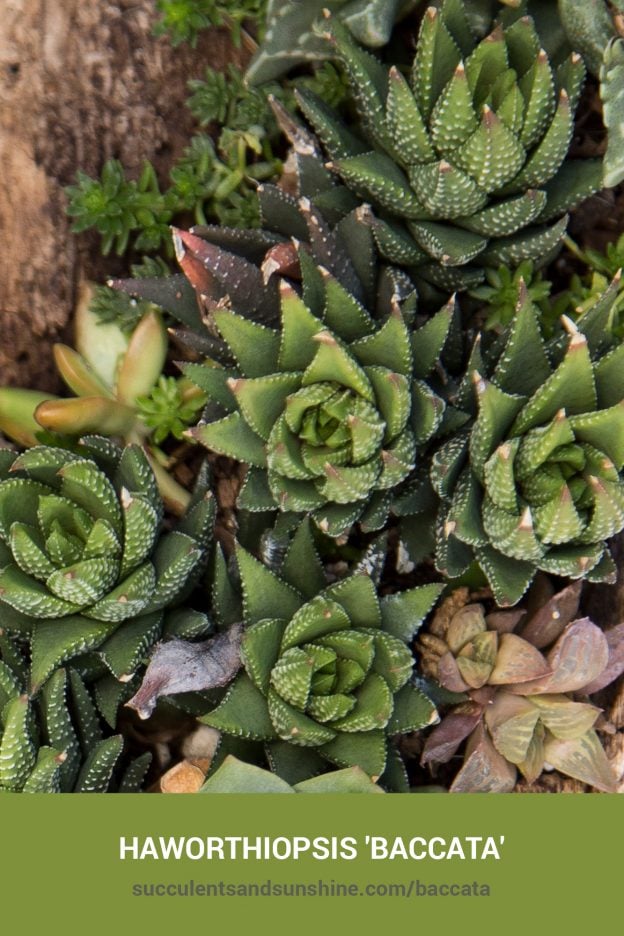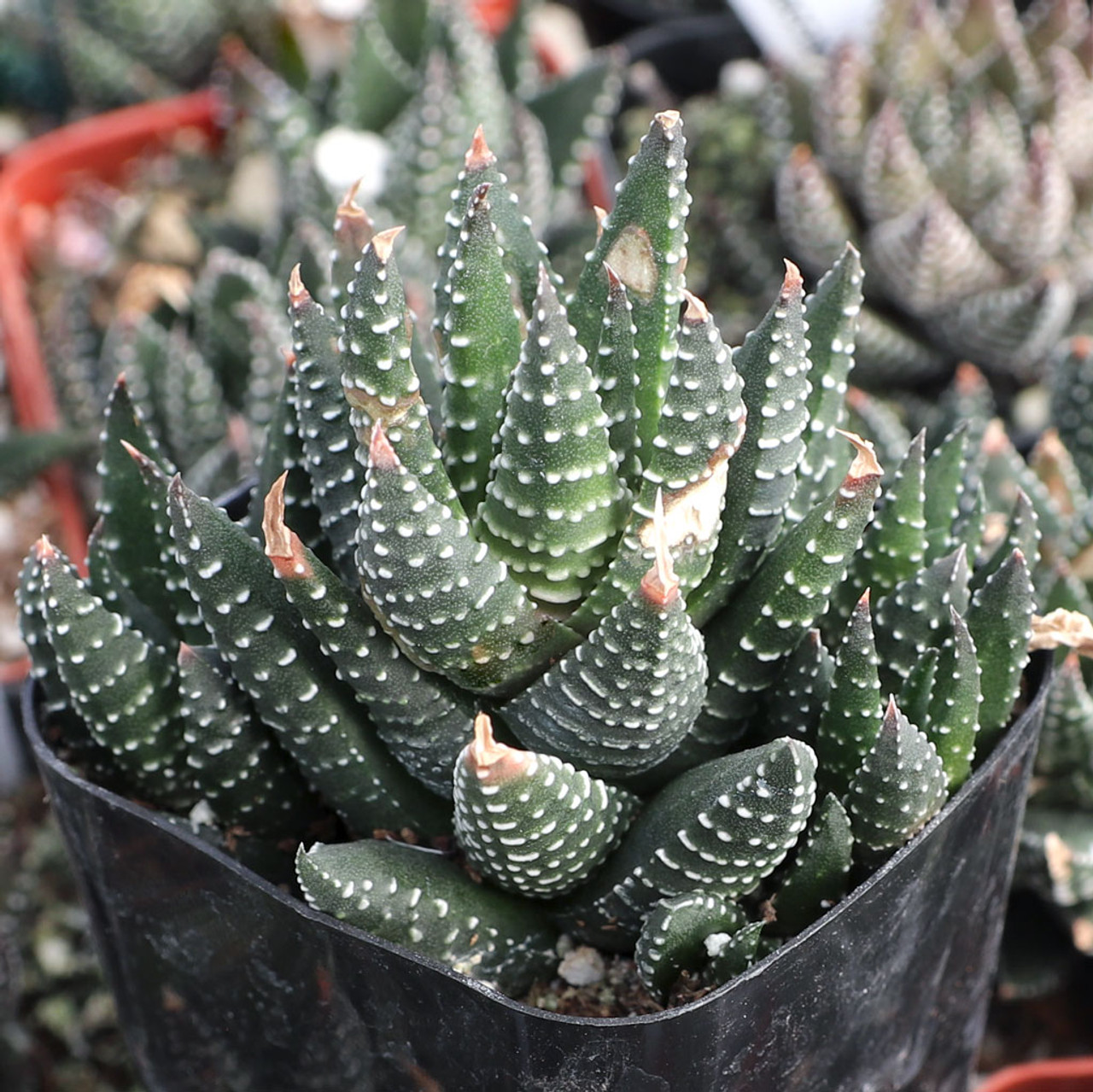This small, dark green succulent has a distinct rosette structure that curves upward. The leaves are triangular in shape and have light green or white bumps on the outside.
Table of Contents
Care and Propagation Information
Haworthiopsis ‘Baccata’ is a succulent that prefers to grow in shaded areas and will spread by producing offsets in a clumping formation. Previously, this plant was referred to as Hawhorthia baccata.
Watering
Haworthiopsis ‘Baccata’ is a succulent that requires the “soak and dry” watering technique, which means that the soil should dry out completely between waterings instead of being kept consistently moist.
Where to Plant
If you live in a place where temperatures drop lower than 30° F (-1.1° C), it is best to keep Haworthiopsis ‘Baccata’ in a container that you can bring indoors when necessary. Place it in a spot in your garden that is well lit but not in full sun.
How to Propagate Haworthiopsis ‘Baccata’
Haworthiopsis ‘Baccata’ can be propagated by separating offsets from the parent plant.
Offsets
To propagate ‘Baccata’, take a sterile, sharp knife or a pair of scissors and cut one of the offsets from the main plant. Let it sit for a few days and allow the wound to heal before planting it in a soil that drains well.
Care and Propagation Information
General Care for Haworthiopsis ‘Baccata’
Watering
Haworthiopsis ‘Baccata’ is a succulent that requires the “soak and dry” watering technique, which means that the soil should dry out completely between waterings instead of being kept consistently moist.
Where to Plant
If you live in a place where temperatures drop lower than 30° F (-1.1° C), it is best to keep Haworthiopsis ‘Baccata’ in a container that you can bring indoors when necessary. Place it in a spot in your garden that is well lit but not in full sun.
How to Propagate Haworthiopsis ‘Baccata’
Haworthiopsis ‘Baccata’ can be propagated by separating offsets from the parent plant.
Offsets
To propagate ‘Baccata’, take a sterile, sharp knife or a pair of scissors and cut one of the offsets from the main plant. Let it sit for a few days and allow the wound to heal before planting it in a soil that drains well.
FAQ
How do you care for Haworthia baccata?
In order to keep your plants healthy, make sure they get bright light with some shade during hot afternoons. Water the plants only when the top inch of soil is dry; do not overwater, but also do not let the soil dry out completely. Plant them in sandy, well-draining, neutral soil, and the optimal time to do so is in the spring or early summer.
How do you care for haworthiopsis baccata?
Reworded: – Sunlight. Flourishes in a combination of direct and indirect light. …
– Water. Drench the soil every two to three weeks in direct light, and allow the soil to dry out in between waterings. …
– Humidity. No need to worry. …
– Temperature. Optimal temperature is between 65°F-75°F. …
– Size. …
– Common Issues. …
– Safety Precautions.
How do you take care of Haworthias in the winter?
Keep them near a window that receives bright, indirect light. If your Haworthia start to look pale, give them a bit more light. Temperature: Haworthia prefer temperatures that stay between 60°F – 80°F (15°C – 27°C).
To ensure your Haworthia stays healthy, water it when the soil is completely dried out and its leaves start to curl (roughly every two to three weeks). During winter, reduce the amount of water and only water every other month. Your Haworthia should be placed in an area with bright, indirect sunlight. If it appears pale, give it a bit more light. Lastly, make sure the temperature remains between 60°F – 80°F (15°C – 27°C).
Do haworthias need full sun?
Haworthias are ideal for indoor environments due to their ability to thrive in partial shade and lower light conditions, even though they typically look best with some direct sunlight or bright light.
Can Haworthia grow indoors?
Haworthias are well suited to life in dry climates with either direct or indirect sunlight. When kept indoors, they prefer temperatures between 75 and 90°F and will show their best color and blooms when in bright, indirect sunlight. Although they can tolerate lower light conditions, they will do better with more light.



